You will also need to write an engaging title that readers will want to click on and add a meta description to help Google better understand the post. This guide also covers how to apply your keyword research in your business or blog, as well as how to track the performance of your keyword research. We show you how to use them to discover what users are searching for in our guide on how to do keyword research for your WordPress blog. There are a number of keyword research tools that you can use for SEO. Don’t fall into the trap of assuming you already know what your audience is searching for. When planning content for your blog or website, you should research the topics relevant to your niche that are actually needed and being searched for.
It is a strategic process that helps website owners and marketers make informed decisions about content creation, optimization, and overall content strategy. Alongside his training and course work, Cathal runs his own digital marketing agency and is considered an analytics and revenue-generating guru – at enterprise level. He has extensive local and international experience working with top B2B and B2C brands across multiple industries. Once crawled, pages are analyzed and stored in the search engine’s index, a massive database of web content.
All you need is a few well-placed prompts, and AI does the heavy lifting. They live inside the HTML code as part of your meta tags, quietly helping search engine bots understand and index your site. Below is my 20-step guide covering the essential parts every article should include to work well for both readers and search engines. I won’t go too deep into technical details; think of these steps as a checklist to ensure your content is well-prepared. Additionally, clearly defined headings signal to search engines the hierarchy and relationship between topics, which improves indexing and ultimately boosts your visibility in search results. NLP enables search engines to identify and highlight specific answers within feature snippets.
Links, Outbound or External
In addition to the on-page SEO elements that your organization has control over, there are also off-page SEO factors that can impact your ranking. In addition, you want to make sure that each piece of the content focuses on just one or two keywords. When strategically placing your SEO keywords and phrases on your pages, it’s important to avoid over-optimization. If you are using images on your website or within your blog content, you will also want to include your keyword or phrase in the image name and alt text. This should include your keyword and also provide enough details to tell the reader what the content is about. This is also used by your human visitors to better understand what the page is about and if it’s relevant.
What Is A SERP Ranking?
But the truth is, the vast majority of beginner users will do just fine with sticking to a couple of basic reports. To describe all the features and data reports Google Analytics has to offer, we would need a separate ultimate guide. There’s a simple search option above every data table to narrow down the results. You can select one of the default segments (e.g. Organic Traffic, Mobile Traffic) or create and save a new one to speed up your workflow. You can find the date range selector at the top right of every report.
Changes in SEO Practices Over the Years
- The goal of SEO is to raise your ranking in organic search results.
- A type of self-competition that occurs when multiple pages from one website rank for the same query on a SERP.
- SEO involves optimizing a website to improve its ranking on search engine results pages (SERPs), which can help increase your reach to potential customers and support your wider digital marketing efforts.
- For further insights, explore our detailed guide on the difference between local and organic SEO and fine-tune your approach for optimal results.
- For instance, with Pape-Dawson, we applied LocalBusiness schema across all their location landing pages.
In 1998, two graduate students at Stanford University, Larry Page and Sergey Brin, developed “Backrub”, a search engine that relied on a mathematical algorithm to rate the prominence of web pages. In effect, this means that some links are stronger than others, as a higher PageRank page is more likely to be reached by the random web surfer. The tool lets you monitor your overall organic visibility, where 100% means a top ranking for all keywords and 0% means you rank outside the top 100 for all keywords. It most commonly involves link building, which is the process of getting BHS Links other high-quality websites to link to your website. Search engines use complex processes and criteria to rank results, aiming to provide users with the best search experience.
The purpose of Hummingbird was to better understand the full context of queries (i.e., semantic search), rather than certain keywords, in order to provide better results. For certain queries, usually questions (i.e., who/what/where/when/why/how), Google sometimes shows a special block above the organic search results. This box contains a summary (in the form of paragraph, list, table, or video), as well as the publication date, page title, link to the webpage from which the answer originated, and URL. Links from .edu sites were considered ‘hard to get’ and thought to have more value for link building. As a result, link builders targeted .edu links until many of the lesser-known .edu sites became devalued by Google and any benefit of the link was ignored.
